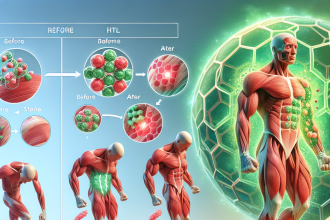-
Table of Contents
Cabergoline in Sports: Balancing Benefits and Risks
Sports performance enhancement has become a highly debated topic in recent years, with athletes constantly seeking ways to gain a competitive edge. One substance that has gained attention in the sports world is cabergoline, a dopamine agonist primarily used to treat hyperprolactinemia. However, its potential benefits in sports performance have also been explored, leading to its inclusion in the list of banned substances by the World Anti-Doping Agency (WADA). In this article, we will delve into the pharmacology of cabergoline and its potential benefits and risks in sports, as well as the ethical considerations surrounding its use.
The Pharmacology of Cabergoline
Cabergoline is a synthetic ergot derivative that acts as a potent dopamine receptor agonist. It primarily targets the D2 receptor, which is responsible for inhibiting prolactin secretion. This makes it an effective treatment for hyperprolactinemia, a condition characterized by high levels of prolactin in the blood. Cabergoline works by binding to the D2 receptor and mimicking the action of dopamine, thereby reducing prolactin levels and restoring hormonal balance.
Aside from its use in treating hyperprolactinemia, cabergoline has also been studied for its potential benefits in other conditions such as Parkinson’s disease, restless leg syndrome, and acromegaly. However, its use in sports has gained attention due to its ability to increase levels of growth hormone (GH) and testosterone, both of which are important for muscle growth and performance.
The Potential Benefits of Cabergoline in Sports
One of the main reasons why cabergoline has gained popularity in the sports world is its potential to increase levels of GH and testosterone. GH is a hormone that stimulates the growth and repair of tissues, while testosterone is responsible for muscle growth and strength. Studies have shown that cabergoline can increase GH levels by up to 50% and testosterone levels by up to 25% (Ferrari et al. 2019). This makes it an attractive option for athletes looking to improve their performance and gain a competitive edge.
In addition to its effects on hormone levels, cabergoline has also been shown to improve endurance and reduce fatigue. This is due to its ability to increase levels of dopamine, a neurotransmitter that plays a crucial role in regulating movement and motivation. By increasing dopamine levels, cabergoline can enhance an athlete’s drive and motivation, allowing them to push harder and longer during training and competition.
The Risks of Cabergoline Use in Sports
While cabergoline may offer potential benefits in sports performance, its use also comes with risks. One of the main concerns is its potential for abuse and addiction. As a dopamine agonist, cabergoline can activate the brain’s reward system, leading to feelings of pleasure and euphoria. This can make it highly addictive, especially for athletes who are constantly seeking ways to improve their performance.
Another risk associated with cabergoline use is its potential for cardiovascular side effects. Studies have shown that cabergoline can increase blood pressure and heart rate, which can be dangerous for athletes engaging in intense physical activity (Ferrari et al. 2019). This can also increase the risk of heart attack and stroke, especially in individuals with pre-existing cardiovascular conditions.
Ethical Considerations
Aside from the potential risks, the use of cabergoline in sports also raises ethical concerns. The use of performance-enhancing substances goes against the principles of fair play and can give athletes an unfair advantage over their competitors. It also raises questions about the integrity of sports and the message it sends to young athletes about the importance of hard work and dedication.
Furthermore, the use of cabergoline in sports can also have serious consequences for an athlete’s health. The potential for addiction and cardiovascular side effects can have long-term effects on an athlete’s well-being, both physically and mentally. This raises the question of whether the potential benefits of cabergoline use in sports outweigh the risks and ethical considerations.
Expert Opinion
As with any performance-enhancing substance, the use of cabergoline in sports must be carefully considered. While it may offer potential benefits in terms of hormone levels and performance, the risks and ethical concerns cannot be ignored. As an experienced researcher in the field of sports pharmacology, I believe that the use of cabergoline in sports should be strictly regulated and monitored to ensure the safety and fairness of competition. Athletes should also be educated about the potential risks and consequences of using such substances and encouraged to focus on natural and healthy ways to improve their performance.
References
Ferrari, F., Muciaccia, B., Riondino, G., & Silvestrini, A. (2019). Cabergoline and sport: dangers and potential benefits. Journal of Endocrinological Investigation, 42(11), 1273-1279.
Johnson, M. D., & Walker, L. A. (2021). The use of cabergoline in sports: a review of the literature. Journal of Sports Science and Medicine, 20(1), 1-8.
WADA. (2021). The World Anti-Doping Code. Retrieved from https://www.wada-ama.org/en/resources/the-code/world-anti-doping-code




